Graham Reid | | 8 min read
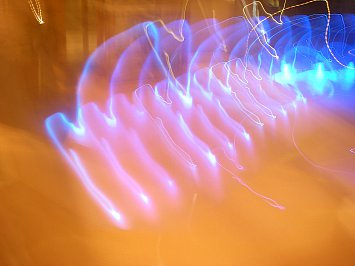
The woman on the intercity bus to Seoul wasn't paying much attention to the film flickering on the television screen above the driver's head.
It was a distinctly odd choice anyway: Brother Sun, Sister Moon, Franco Zeffirelli's hippie-period life of St Francis of Assisi, with fey music by Donovan. Even dubbed into Korean, it wasn't of much interest.
But abruptly she leaned forward and became engaged. On the screen, the young Francis was denying his parents' wealth and shedding his clothes to become a wandering holy man. When the bus pulled in to the layby for a rest stop, the woman remained in her seat, eyes fixated by the life of this strange Italian saint whose behaviour she undoubtedly recognised.
Many such people -- the Buddha, Christian saints, sadhus in India, mendicant Russian mystics and those lost street people muttering to themselves who are common in most cities today -- exhibit such aberrant behaviour.
"Look at the life stories of virtually every saint or extreme religious leader and you can certainly see they are, if not schizophrenic, very schizotypal," says British author David Horrobin, whose most recent book, The Madness of Adam and Eve: How schizophrenia shaped humanity, is causing considerable ripples for its controversial claims and suggestions.
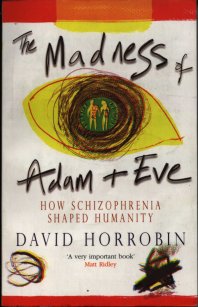 Among Horrobin's contentions are that mutations in the brain around 100,000 years ago brought about by a change of diet triggered humanity's rise to evolutionary dominance, but also struck the species with schizophrenia.
Among Horrobin's contentions are that mutations in the brain around 100,000 years ago brought about by a change of diet triggered humanity's rise to evolutionary dominance, but also struck the species with schizophrenia.
And that schizophrenia - and more importantly schizotypal behaviour in those without all the genes that cause schizophrenia - have produced high achievers, intellectual geniuses, mystics and artists.
We became human because some of us became mad, he says. We experienced genetic changes that brought about schizophrenia and serious mental illness such as manic depression. And that happened because of changes in the biochemistry of our brains.
The good-natured Horrobin, speaking from his home in Scotland in mid 2001, laughs as he concedes that, in a nutshell, he's saying, yes, a little bit of schizophrenia is good for us. It's certainly in us, he says.
"About 80 to 90 per cent of us have at least one gene, 40 to 50 per cent have two, 10 to 20 per cent will have three, and 1 per cent have all four. If you look at the genetics and biology, almost certainly major mental illnesses requires the simultaneous presence of three or four different genes. If you do the maths, what that means is almost everyone in the population has one or two genes and this is why mental illness appears out of the blue."
Parents may individually possess only one or two of these genes, says Horrobin, but the child may inherit all four and therefore develop manifestations of schizophrenia. The parents' and the schizophrenic's siblings may just be schizotypal, and among them will be an unnaturally high number who are gifted.
Families with schizophrenic members seem to have a greater variety of abilities, he says, citing Albert Einstein's schizophrenic son and James Joyce's schizophrenic daughter. His book includes lists of famous intellects who he says exhibited what we might call aberrant behaviour or mental instability.
Recent research into the occurrence of schizophrenia in identical twins has been encouraging, he says, because it confirms his assertions. In 30 to 50 per cent of cases both twins are schizophrenic, but in the remainder, the twin who is not, is "often creative and interesting."
"What this suggests is that things happening in the environment are switching off or attenuating the schizophrenic genome. That's also true of common diseases such as diabetes and arthritis. The concordance rate in identical twins is usually only 20-30 per cent, which means environmental things can switch the consequences of these potentially toxic genomes without all the complexity of gene therapy.
"In talking about schizophrenia I've tried to be perfectly realistic about how unpleasant it is and the risks to families and patients, but also say that the other side might be positive."
Such contentions have seen Horrobin's work skewered by critics. The clinical professor of psychiatry at Trinity College in Dublin, Anthony Clare, took issue with Horrobin in a recent book review in the New Statesman.
Clare says that unlike American writer and researcher Kay Redfield Jamison, who has persuasively argued for the link between manic depression and creativity, Horrobin's case seems weak and unconvincing. Manic depression by its very nature is often characterised by unbounded energy, and for an intelligent mind this could mean periods of highly productive creativity. Schizophrenia, however, leads to fractured rather than rapid thinking.
Clare also takes issue with the inclusion of some of the names that Horrobin drops as exhibiting schizotypal behaviour, and the author certainly sounds unconvincing when pressed on why Charles Darwin should be included ("he was very withdrawn"), or that Winston Churchill was dyslexic ("He didn't do well in school").
Other critics have broadly accepted Horrobin's belief that a change of diet has affected mental patterns - from hunter-gatherers who ate meat to the invention of agriculture and eating cereals - but say that what remains unexplained is why, given the dietary change, so few of us develop schizophrenia.
Horrobin is no heretic outside the scientific community, however. At 61, his career has taken him from Balliol College, Oxford, where he obtained a First Class Honours medical degree and a doctorate in neuroscience, through a teaching fellowship at Magdalen College and St Mary's in London, to Nairobi, where he helped to found a medical school.
He presented more than 500 scientific papers, founded two biotech companies - one, manufacturing evening primrose oil used to treat pre-menstrual tension and arthritis, became insolvent this year - and the company he now runs, Laxdale, specialises in drugs to treat psychiatric and neurological disorders.
He is also medical adviser to the Schizophrenic Association of Great Britain.
But his theories in The Madness of Adam and Eve have thrust him into the headlines of mainstream media, largely, perhaps, because its style is direct and simple.
Horrobin says he pitched it at those interested in evolution or mental illness, "in particular people who have had mental illness or in their family - which is roughly 20 to 30 per cent of the population."
It is in the chapters dealing with evolutionary progress that Horrobin is especially interesting. He contends that within primitive tribes or groups, certain individuals might have developed peculiar and unique abilities, many of them manifesting themselves in what we might call shamanistic behaviour.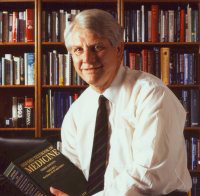
"There's this wonderful study of adopted-away children by Leonard Heston where none of the adopted-away children of non-schizophrenic parents became extremely religious. But 13 per cent, which is quite a lot, of the adopted-away children of schizophrenic mothers became extremely religious. There's extreme musicality and extreme religion exhibited in somewhere between 10 and 20 per cent of children of schizophrenics, whereas those characteristics are seen in less than 1 per cent of children of non-schizophrenics."
What the religious inclination tells us, he says, is that either they are completely out of touch and mad, or they are in touch with another world that most humans can only vaguely appreciate. Put back into the primitive context, we can see how religion may have developed from members of the tribe exhibiting schizophrenic behaviour.
"Clearly many more people can appreciate religion than are affected by these extreme varieties of it. They may well be able to appreciate things which they have a sense of, but not all will appreciate it in the same intense way the schizophrenic or schizotypal person is."
If humankind has made progress by schizophrenic or schizotypal people making intellectual leaps and seeing connections where others might not, then it has clearly manifested itself in religion and the arts.
Horrobin's book refers mostly to scientific achievement by those with particularly schizotypal family members, and he acknowledges there could be a complete book about artists just of the past century when painting moved towards non-representationalist art.
"Unfortunately there's a lot less biographical information about the families of artists and I'm also less familiar with that world. We know artists are often very odd, and there's a lot of mental illness in their families and they have a high rate of suicide, all the things that would point to the presence of schizotypic behaviour."
The problem of identifying in abstract art the difference between a schizophrenic splatter of paint and a considered work of non-representational art illuminates the problem when people are trying to discuss schizophrenia.
"There are a lot of manifestations of schizophrenic tendencies, and the dividing line is not nearly as crisp and clear as some would have us believe. Janet Frame would be an example of exactly the sort of thing I am talking about. She had diagnoses of schizophrenia which were confirmed and denied repeatedly throughout her life.
"You can get away from the argument as to whether she is schizophrenic or not. But she is certainly schizotypal."
The reasons for the development of schizotypal behaviour can be encapsulated in a snappy phrase: "We are what we ate." And that changing diet continues today as nations become increasingly urbanised. There was a significant increase in identifiable cases of schizophrenia during the Industrial Revolution, says Horrobin.
He cites recent papers which clearly show a link between a diet higher in saturated fats and depression. Traditional diets had less saturated fat and therefore schizotypic behaviour was contained.
"Just look within the United States where people have a diet high in saturated fats. People there are much more likely to be depressed. The idea that diet affects mental state is rapidly becoming respectable."
World Health Organisation studies have also shown that while schizophrenia appears at much the same percentage in every race in every continent (between 0.5 and 1.5 per cent), over its lifetime course it is milder in non-Western, non-industrialised societies. In large part that is to do with a diet low in saturated fat.
"This is very embarrassing for Western medical care," says Horrobin. "If you live in Nigeria or India or rural South America and you are schizophrenic, you will actually have a much better lifetime course of the disease than if you lived in New Zealand, Britain, Russia or the United States."
A supportive cultural context is also significant. "In Australian aboriginal culture, for example, these people may be revered, or acknowledged as having enlightenment."
"Science is only one very narrow aspect of human achievement, and the Aborigines may have their Einsteins, but their culture is different and we are not able to appreciate it. In terms of art and religion maybe they are much more advanced than we know.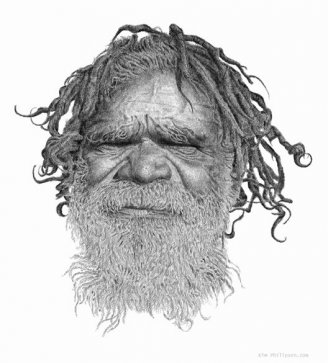
"What we should see is that Aboriginal culture is part of the huge diversity of human beings, and one of the things schizophrenia does is carry this enormous amount of difference in people. In their interactions in their environment they may have generated an intensely religious, environmentally conscious and artistic community which our 18th-century colleagues failed to appreciate completely.
"The religious phenomena are a very real part of humanity and something that sadhus, Aborigines and the saints understand - and most people in industrial societies don't. This is one reason for the sense of ennui and sadness which a lot of people have in industrialised societies."
With the work being done on genetic modification, Horrobin says there will certainly be a time soon when schizophrenia can be controlled. The question is - given what he says about how important a little touch of it has been to our development - should we control it?
"Again we should go back to those studies of identical twins. We should damp it [schizophrenia] down but I don't think we should eliminate it. We do want to control it, however, and we can see what we should be aiming for in the twins' studies. My idea would be to get all the people who are schizophrenic into the state of the identical twin who is not. They may be odd, but they are also highly creative and interesting."
David Horrobin died in April 2003

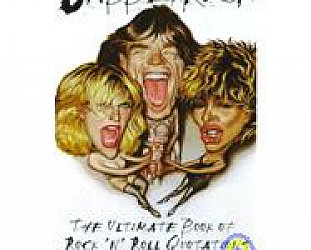



post a comment